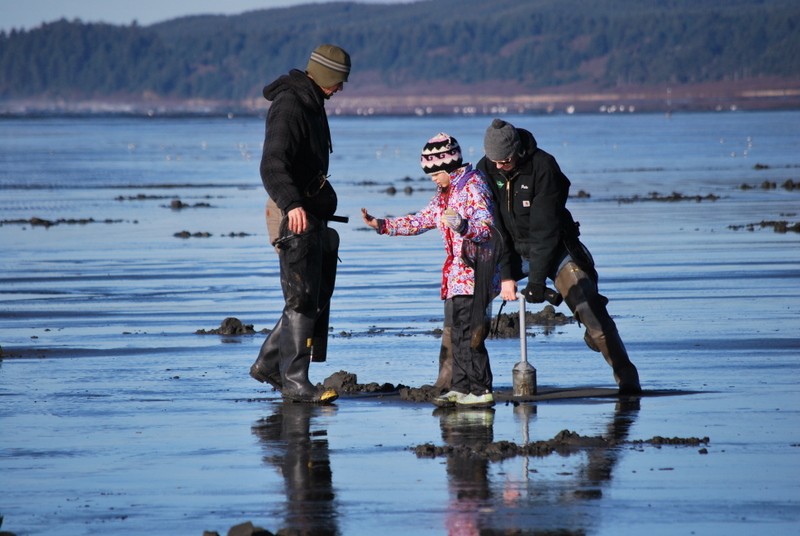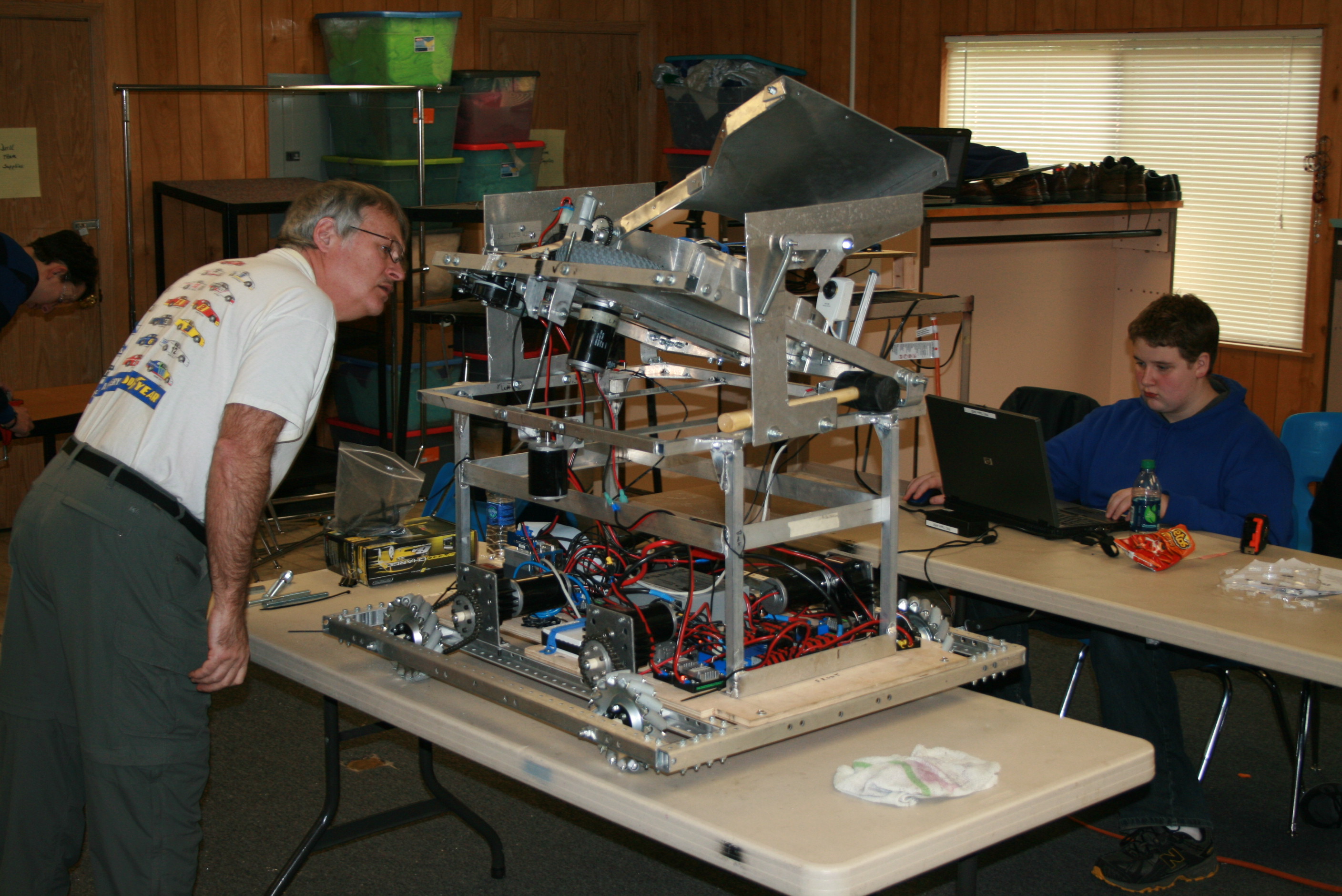By Tom Rohrer
![]() Portable number nine behind Capital High School was bustling with activity, the majority of which seemed far too advanced given the age of those participating.
Portable number nine behind Capital High School was bustling with activity, the majority of which seemed far too advanced given the age of those participating.
One individual was at a computer using a program that displayed the working robot at the center of all the student’s attention. An adult supervisor plugged in numbers into another computer and saw the metal design move appropriately. Two other students monitored the robot’s movement and reacted in a positive or negative fashion depending on whether the machine moved appropriately.
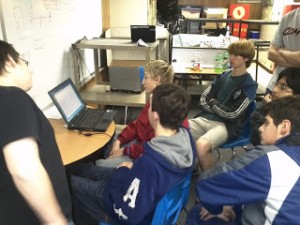 What could draw such accentuated emotions and reactions from this group?
What could draw such accentuated emotions and reactions from this group?
The answer is the Seattle Regional of the FIRST Robotics Competition (FRC), which will be held on Friday, March 29 and Saturday, March 30 at the CenturyLink Event Center.
Together, the students form FRC Team 4450, of the Olympia Robotics Federation.
It will be Team 4450’s first FRC competition, which requires them to erect a robot using specific guidelines in six weeks before shipping it off to Seattle for the competition.
Comprised of about two dozen students from Olympia, Capital and Avanti High School, the team was given official specifications in January. Using that template, team 4450 created a robot that has the ability to dispense a Frisbee and climb up a sloped structure.
Participation in the FRC is part of the Olympia School District’s CTE (Career Technical Education) Stem Robotics Program, which has courses across 20 district classrooms at the middle and high school level and allows students to learn and practice a variety of different technological disciplines.
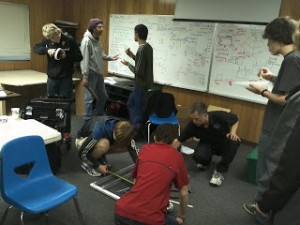 “The single reason we chose robotics is because of the breadth and depth of the different engineering disciplines,” said Randy Steele, the CTE STEM Coach for the Olympia School District, and one of the coaches for Team 4450. “It’s electrical engineering, mechanical engineering, system design engineering, software design engineering, and electronic engineering. You have this broad exposure and the depth so students can go as far as they want to.”
“The single reason we chose robotics is because of the breadth and depth of the different engineering disciplines,” said Randy Steele, the CTE STEM Coach for the Olympia School District, and one of the coaches for Team 4450. “It’s electrical engineering, mechanical engineering, system design engineering, software design engineering, and electronic engineering. You have this broad exposure and the depth so students can go as far as they want to.”
The OSD thought they were a few years away from implementing an FRC team despite the success at the middle school level. That’s where Massachusetts Institute of Technology alumni Peter Cook came in. Cook came to Steele asking if he could lead the team, and together, along with Richard Corn, the students are able to learn from three knowledgeable and dedicated instructors. Steele is no slouch himself, having spent twenty years as a computer chip designer before working for the OSD.
“He’s been true to his words and has put in hundreds of hours,” Steele said of Cook. “And Richard has been great with the kids as well.”
The competitive aspect of the FRC regional brings the team together, and makes them work even harder toward a common goal.
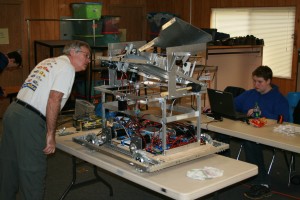 “I think the competitive aspect for me is just icing on the cake,” said Olympia High School senior Trevor Johnson, one of the team’s two captains. “I am really in to building things and competing is just an added bonus to building a very complex, huge robot.”
“I think the competitive aspect for me is just icing on the cake,” said Olympia High School senior Trevor Johnson, one of the team’s two captains. “I am really in to building things and competing is just an added bonus to building a very complex, huge robot.”
“We looked at science, technology, engineering, and math, and thought, how can we make it more exciting and engaging,” Steele said. “So we looked at sports and music programs that are so successful with kids, and you have that team based element and competitive element with a common goal.”
To reach that common goal and compete in the FRC regional event, the team had to delve out tasks to certain project groups focusing on a particular element of the robot. This could include the design, mechanics or connection between the computer and the robot (among many other aspects). In January, the FRC sent out a template for teams to follow, which included required dimensions and capabilities, and the team had six weeks from that point to assemble the project. With that many separate tasks for one common goal project, it’s important for the team to be in constant communication.
“With all the different design groups for different things, we make sure there isn’t any conflict for the space people requested and we make sure we allot that space,” said co-captain Will Clem, a sophomore at CHS. “We talk frequently just to make sure we have enough space for everything.”
This constant communication has only brought the team closer together.
“I’d say we have become pretty close, how can you not?” said Clem.
“It is really fun to work with other students from the cross town schools,” Johnson said. “Some of my teammates were part of First Technology Challenge (FTC) rival teams and it is pretty cool that we can all join FRC and create an awesome robot.”
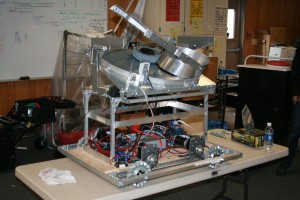 So will Team 4450’s creation stack up to the rest of the competition? It will be up to the various judging panels at the contest, and of course, the robot itself. At this point, both the team members and coaches are feeling confident.
So will Team 4450’s creation stack up to the rest of the competition? It will be up to the various judging panels at the contest, and of course, the robot itself. At this point, both the team members and coaches are feeling confident.
“We took it up to Tacoma about five weeks in and set up a full arena (the space where the robots will compete, about the size of a gymnasium) and we were the only rookie team and one of three teams overall that had a functioning robot,” Steele said. “As a rookie team, we were happy with that.”
“It’s tested generally well to my knowledge,” Clem said. “It’s an unpredictable contest, and that can be fun, because it makes you think quick and react with adjustments. I just want it to run properly, and I think it will go very well if that’s the case.”
For more information on the Olympia Robotics Federation, visit http://www.frc4450.tk/
For more information on Washington First Robotics, visit http://www.firstwa.org/
For a schedule for this weekend’s event, click here.



























